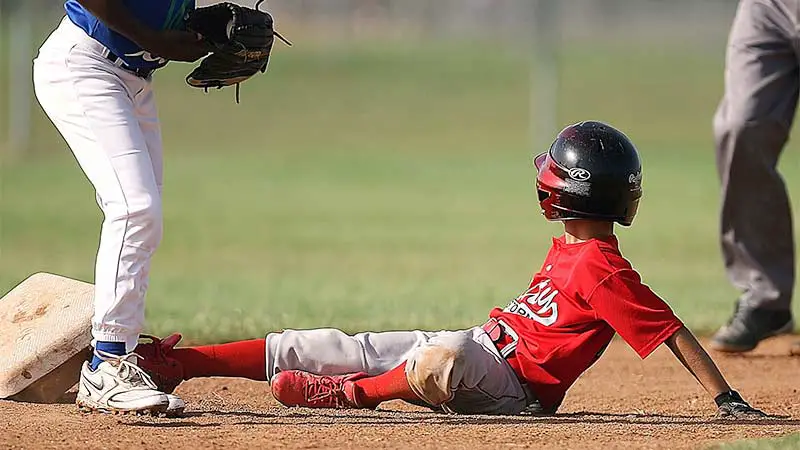Baseball substitution rules can be a maze of regulations, varying significantly between professional and amateur leagues. Understanding these rules is crucial, as improper substitutions can lead to game protests and tarnish an umpire’s reputation.
For instance, Major League Baseball adheres to a strict no reentry policy once you’re out, you’re out for the rest of the game.
In contrast, amateur baseball often allows for substitutions and reentry, adding layers of complexity. A fascinating example from 1952 saw pitcher Harvey Haddix switch positions with outfielder Stan Musial mid-game, only to switch back later.
This maneuver didn’t violate any rules, highlighting the nuanced nature of baseball substitutions. By mastering these rules, you’ll ensure smooth gameplay and avoid costly errors.
Overview of Baseball Substitution Rules
Baseball substitution rules are fundamental to the game’s management and strategic play. Whether you’re involved in Major League Baseball or amateur leagues, understanding these rules is essential for smooth gameplay and avoiding penalties. Here’s an overview:
The Purpose of Substitutions in Baseball
Substitutions in baseball ensure the smooth functioning of the game. They enable teams to replace players due to various reasons like injuries, strategic advantages, or to improve performance.
By understanding substitution rules, you can better manage your team’s roster and make tactical decisions during games.
Overview of Key Rules and Regulations
In baseball, understanding the rules and regulations surrounding player substitutions is crucial for effective team management and strategic gameplay. Here’s an overview of some key rules and regulations:
Re-entry Policies
In baseball, once a player is substituted out, they typically can’t re-enter, a rule strictly enforced in Major League Baseball (MLB). Conversely, amateur leagues often allow re-entry, adding strategic flexibility.
Pitcher Substitution
Pitchers can be removed and re-entered once per inning in specific circumstances, like having less than three charged conferences. Substitutions aim to improve defense, rest pitchers, or exploit matchups.
Designated Hitter (DH) Rule
The DH rule permits teams to substitute a hitter for the pitcher without altering defensive positions. However, the DH loses their status if they take the field. Pinch hitters or runners can also be used strategically.
Announcement of Substitutions
Transparency is key in baseball substitutions. Players involved must be promptly communicated to the umpire and opposing team. Failure to comply can result in protests or disqualifications.
Types of Substitutions in Baseball
Let’s dive into the different types of substitutions in baseball:
Offensive Substitutions
Offensive substitutions in baseball involve replacing a batter or runner to gain a strategic advantage.
Common types include the pinch hitter, who substitutes for a batter that might struggle against a specific pitcher, and the pinch runner, who replaces a slower runner to improve base-stealing or scoring potential.
Each substitution must be declared as the substitute enters the game. Avoid accepting multiple offensive substitutions in advance to prevent confusion and issues with the batting order.
Defensive Substitutions
Defensive substitutions usually happen to address tactical adjustments or injuries, often during the break between half-innings. The team manager needs to know the substitute’s batting order position but not their defensive position, except for pitchers.
Managers often change pitchers or adjust defensive players to enhance fielding or manage pitcher fatigue, such as bringing in a defensive specialist to maintain a lead in the late innings. These substitutions can be made at any time while the team is on defense.
Pitching Changes and Strategies
Pitching changes are crucial for managing game dynamics and pitcher fatigue, with the pitcher required to face at least one batter before substitution, extended to three batters in MLB since 2020.
These changes occur to exploit pitcher-batter matchups or when the pitcher shows signs of fatigue, allowing managers to maintain game control and manage pitcher usage effectively over the season.
Rules Governing Substitutions
Let’s delve into the rules governing substitutions in baseball:
Player Re-entry Rules
In Major League Baseball (MLB), players cannot re-enter the game once they have been substituted out, which requires strategic substitutions.
In contrast, amateur baseball leagues often allow starters to re-enter once, provided they take the same place in the batting order, although substitutes cannot re-enter.
For instance, Little League’s Rule 3.03 permits starters to re-enter after their substitutes complete a mandatory play. Re-entry rules can vary further in suspended and resumed games, with Major League Rule 7.02(c) specifying the use of the original lineup when play resumes.
Special Substitution Scenarios
Special substitution scenarios in baseball include the double-switch in National League games, where a manager replaces both a pitcher and a position player simultaneously to gain strategic advantages in the batting order.
Another scenario involves pinch hitter substitutions, allowing continuous tactical adjustments if the opposing team changes pitchers.
Suspended games add complexity, as players from the original lineup can re-enter under certain conditions, ensuring the game resumes smoothly despite interruptions like weather delays.
Defensive Substitutions
Defensive substitutions are crucial for maintaining game momentum and addressing injuries, often enhancing fielding capabilities during critical moments. Managers can bring in defensive specialists late in the game to prevent runs and secure victories.
Pitcher substitutions are especially vital, as MLB rules allow managers to replace pitchers during or between innings to manage fatigue and specific batter matchups, significantly influencing game outcomes.
Common Challenges and Misunderstandings
Navigating baseball substitutions can present challenges and misconceptions that require careful handling. Let’s address some common ones:
Handling Illegal Substitutions
Illegal substitutions can disrupt a game. MLB, NCAA, and FED have slightly different protocols, but general guidelines can help. When an illegal substitute is identified, remove the player immediately.
The replaced player cannot re-enter once the illegal substitute exits. Prioritize preventive umpiring by reviewing substitutions carefully. If you spot a potential illegal substitution, address it with the manager before accepting the change.
An illegal substitution occurs when an ineligible player enters the game, assuming any defensive, offensive, or designated hitter role.
Managing Unannounced Substitutions
Unannounced substitutions, though potentially confusing, are not rule infractions. They happen without notifying the plate umpire but become valid once the player actively participates, such as a pitcher on the mound or a batter in the box.
These should be treated like any other substitutions, without penalties. If an issue arises with an unannounced pinch hitter, call time to review the lineup.
Maintain clear communication with team scorekeepers and ensure your lineup card is accurate to avoid discrepancies with the official scorekeeper. If a misalignment occurs, your lineup takes precedence.
By following these guidelines, you can manage substitution challenges confidently, preserving the game’s integrity and flow.
Frequently Asked Questions
How many substitutes are allowed in MLB?
Baseball does not have an explicit cap on the number of substitutions that can be made in a game, although in practice teams must adhere to roster limits and may not make more substitutions than the number of players the team has in reserve.
What happens if a pitcher is replaced as a pitcher and his replacement?
If the pitcher is replaced, the substitute pitcher must pitch to the current batter, or any substitute batter, until the batter is put out or reaches first base, unless the substitute pitcher sustains an injury or illness.
Do umpires have to wear grey pants?
Umpires generally wear grey pants. Charcoal grey is preferred by baseball umpires, while heather grey is usually reserved for softball umpires and some high school associations.
Can a substituted player return to play in baseball?
In baseball, once a player is substituted out of the game, they cannot return to play in that same game under the traditional substitution rules.
Can a player refuse a substitution?
A player must comply with the coach or manager’s decision to be substituted. Refusing to leave the field can lead to disciplinary action from the governing body of the competition.
Conclusion
Understanding baseball substitution rules is essential for anyone involved in the game. Whether you’re a coach, player, or fan, knowing these rules can significantly impact your grasp of the sport’s strategies and nuances.
By mastering the intricacies of substitutions, from player re-entry to managing special scenarios, you’ll enhance your ability to navigate the game effectively.
Remember, staying informed about these rules not only helps in maintaining the integrity and flow of the game but also plays a crucial role in strategic planning and roster management.
With a comprehensive understanding of baseball substitution rules, you can anticipate tactical moves, respond to game situations more effectively, and optimize the performance of your team.
Stay proactive and continuously update your knowledge to keep up with any rule changes and adjustments.








Pat Bloom